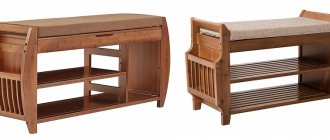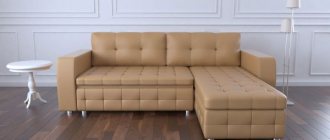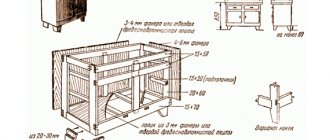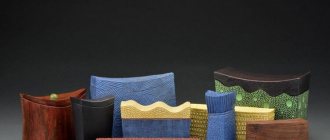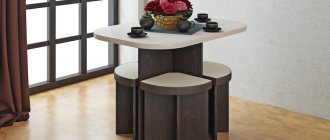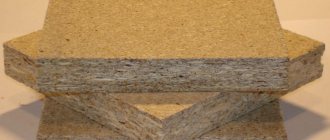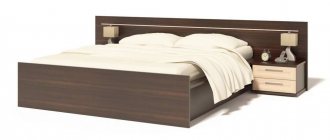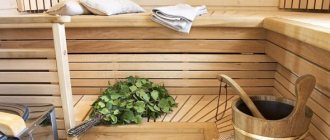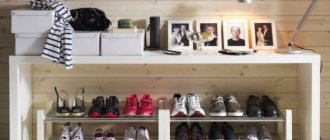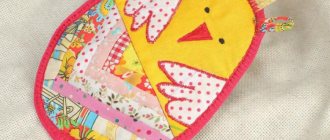In the hallways there are two types of storage places for shoes: for those that are worn now and those that will be needed in other seasons. In the second case, space is allocated in closets and wardrobe compartments. Narrow shelves, drawers and baskets, various storage systems and organizers allow you to bring order and consistency. But for the first case, some kind of separate cabinet, chest of drawers or do-it-yourself shoe rack, made of the right size for the hallway, will come in handy. I selected photos and drew drawings and diagrams of the most successful models of narrow functional shoe holders and overshoes, which can be purchased ready-made or made independently.
Why you should make a shoe rack with your own hands for the hallway
The problem of placing shoes worn at a given time in the hallway can be solved in different ways. Typically, low cabinets with a soft seat are used for storing seasonal shoes and slippers - they are also called shoe boots.
They also design open shelving with shelves for shoes of shallow depth. If you place the shelves at an angle, you can make the rack narrower - after all, its depth is determined by the size of the shoes.
A slim shoe rack is perhaps the best option possible. In the reference book with a list of furniture and interior items, I defined “slim”. Essentially, this is a shoe rack with a rotating mechanism that you can make with your own hands.
Due to the fact that the shoes are in an almost vertical position, the depth of such a cabinet is very small - ideal for small and narrow hallways.
Since a shoe rack of this type is narrow and unstable, it must be attached to the wall. You can make it hanging, which will give the interior an additional zest and allow you to slide something under the body of the cabinet. Often a mirror is hung above a shoe rack, and its lid is used as a shelf for all sorts of small things, which is also very convenient. You can screw hooks, hangers for umbrellas and bags with your own hands to the side of the shoe rack - this will expand the functionality of the furniture and add comfort to the interior of the hallway.
The benefits of making your own shoe cabinet of the desired design are obvious:
- In order to make a shoe rack with your own hands, you can use scrap materials and any leftovers.
- The design of a typical shoe cabinet is extremely simple, and the variety of drawings and photos allows you to choose the best option.
- Since the material consumption is low, as is the cost of the product, such projects are reluctant to be commissioned. You can immediately save yourself time and do it yourself.
Mechanism for shoe rack
A shoe rack, as an interior item, is present in virtually every home, and this is no longer the old Soviet model with sliding doors and a hinged top lid, which was presented on the market in only a few versions. Today's shoe racks look much better, but they also lack variety and are assembled, for the most part, using a conventional plastic mechanism. We will talk about how to use it. The mechanism consists of the main side parts (1), driven bushings (2), clamps (3), on which the entire structure will rotate, and limiters (4), which work in two directions - both for closing and opening. Here is the simplest and cheapest thing you can find on the market. There are mechanisms that allow you to place one more section.
Here's the documentation you can find on the supplier's website:
Personally, I am not entirely satisfied with them, because... the lower decorative strip does not fit into the appearance of the finished shoe rack and significantly complicates the manufacturing and assembly process. Therefore, for the umpteenth time, I am assembling a prototype. Firstly: I refuse the false strip, secondly: I try to reduce the gaps (which turns out to be impossible when using only one presented mechanism), thirdly: I am faced with the task of installing two shoe rack mechanisms on one wall of 16 LDS P (judging by According to the manufacturer's documentation, this cannot be done - but there are options). The result should be something similar:
Here's what you get in terms of dimensions for adding a shoe rack mechanism:
The side width is 223 mm - the minimum for printed fiberboard; if you are making an inset back wall or a rigid one from laminated chipboard, then it must be increased accordingly. The dimensions of the space from the front wall of 42 mm and 34 mm are taken for inset 16mm facades; if you use others, add the difference in thickness. The heights are calculated for the location and dimensions of the facades:
The gaps, as already noted, cannot be minimized, because when opening, the facade begins to touch either the bottom or the lower facade. The problem can be solved by using inset hinges and a bar stop, but then we get a regular cabinet, where the shoe rack mechanism acts only as a holder for shoes - accordingly, there is no need to make an additive for the bushings (do not forget about the middle shelf for attaching the hinges, if the shoe rack is double) .
The most difficult process of assembling a shoe rack is attaching the facade. For our case, we mark it as follows under the lower holes of the plastic sidewalls:
Leave 4 mm gaps on the right and left ! Those. the internal width of the department in this case will be 568mm. A line of 15 should run through the centers of the holes, and the bottom single hole should be at 83mm from the edge of the façade.
This is what happens. A few words about the photo: it’s better to fasten the internal partitions with self-tapping screws with a small head, and not like we do with ordinary ChRSh, although the shoe maker works great with them too. We calculate the internal partitions based on the formula: L opening - 16 mm , and make the height of the bottom bar 85 mm, and the two middle ones 135 mm each (not 140 for one). It is better to edge them around the perimeter.
Now comes the fun part. To install two shoe rack mechanisms on one wall made of 16 mm laminated chipboard, you need to: make a through additive in it, sand the bushings and stops or cut them to 2.5 and 4.5 mm, respectively. The structure will not lose rigidity and everything will work perfectly, the main thing is to explain to the customer how to assemble everything correctly.
DIY shoe rack with seat, photos and drawings
The most comfortable sitting height is 350-500mm above floor level. The width of the seat must be at least 300mm. Most often, a compact shoe rack with a seat with your own hands has dimensions of 400x600x350mm. You can make the shoe cabinet longer and higher if the size of the hallway allows it.
DIY shoe rack made from pipes, photos and drawings
Such a small and practical piece of furniture can be made from scrap materials - everything that is left over. For example, use pipe cuttings.
In this case, the shoe rack can be made in the form of a tall narrow cabinet for shoes or a shoe cabinet with a seat.
Pipes can also be used as supports for shelves. For example, in the implementation of a carousel shoe rack with a rotating base.
The rotating element is a conventional TV rotating mechanism with a square platform. To ensure stability of the cabinet, you can make the base larger; the height should not exceed the radius of the shelves without additional weighting the center of the structure.
DIY narrow shoe rack with inclined shelves, photos and drawings
The greater the slope of the shelves, the narrower the shoe rack itself can be made. But you will need to provide some kind of stopper that will prevent boots, sneakers and other items from sliding off the surface of the shelves due to the slope. The stopper can be made from a wooden or metal tube, or a narrow strip of chipboard or wood.
As inclined shelves, you can use special nets for wardrobes with a side.
I recommend that you familiarize yourself with the range of such components in various wardrobe systems and related accessories for sliding systems (such as Commander, Find, Aristo, etc.). There are a lot of storage systems for hallways and dressing rooms with fastening to the side and back walls, as well as the placement of shoes in a vertical position (sole top) on “peaks” and “petals”.
Assembling a shoe rack
First of all, we assemble the frame of the shoe rack, four main parts - two sidewalls, a roof and a bottom. The box itself can be assembled at:
- Confirmats - here you will see the stubs from them,
- Minifixes - the process of installing an eccentric coupler is described in more detail in the article Installing a furniture eccentric,
- Furniture metal corners.
It's up to you to decide what will be easiest for you. I would still recommend minifixes.
After we assemble the box, we can install the internal parts.
The easiest way to screw them to the sidewalls and bottom is with confirmations, and to the roof and between each other in the center - with metal corners.
The final work on the frame will be the installation of the fiberboard back wall. In principle, nothing complicated should arise here.
It should be remembered that when installing the back wall of fiberboard, you should always have a perfect square/rectangle with even diagonals
DIY shoe rack made of wood and scrap materials
Strictly speaking, chipboard is not the best option for storing wet shoes. It does not have the required moisture resistance and requires more careful use. Therefore, a shoe rack made of wood, metal, MDF, or furniture board seems a more attractive option for making it yourself.
In addition, wood, plywood and furniture panels provide more opportunities in the design of a shoe cabinet. Hollow and openwork-shaped sidewalls can be used as supports.
Or in a simpler version - using timber as supports.
In general, you can use any scraps and materials at hand to make a shoe cabinet with your own hands.
Necessary materials
The materials for making shoe racks can be:
- MDF board,
- Chipboard board,
- Plywood,
- Tree.
As for plywood, it is certainly one of the most durable materials for making furniture. However, it requires additional processing and painting.
MDF is also highly durable. Its dense structure facilitates the process of drilling and assembling the product. But, often, if you make a shoe rack entirely from MDF, the product turns out to be quite heavy and expensive. Therefore, only facades are usually made from MDF, and the entire body is assembled from chipboard.
When ordering cutting and lamination of MDF, you can additionally choose milling on the plate, that is, using special milling equipment, a relief pattern will be applied to the parts. It will add a special style to your shoe rack.
In this material we will look at the manufacture of overshoes from a chipboard slab with a thickness of 16 mm - for the frame, and 10 mm - for the internal partitions of the overshoes. This material is one of the most budget-friendly on the market.
Due to the fact that chipboards have a wide range of colors, you can choose the color you like most or choose a decor that best matches the rest of the furniture in your home.
Our design involves the use of two colors: dark wenge (for the roof, sides, internal pillar and bottom) and light wenge (for the facades).
Of course, it is much easier to order detailing from a specialized store or workshop, since chipping cannot be avoided when cutting parts yourself. You just need to go to a furniture shop with detailing, and they will also trim them for you.
